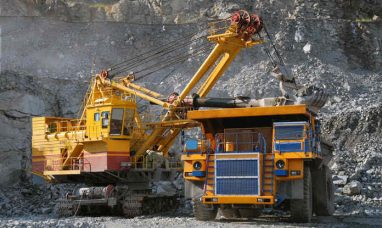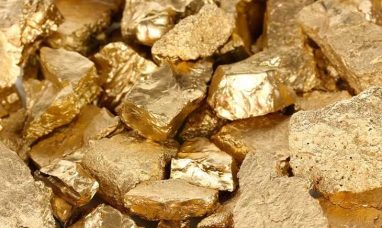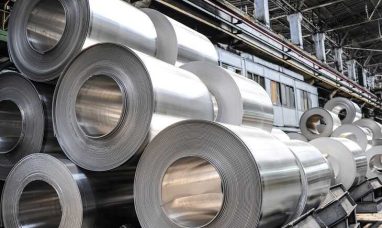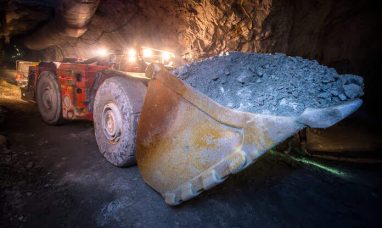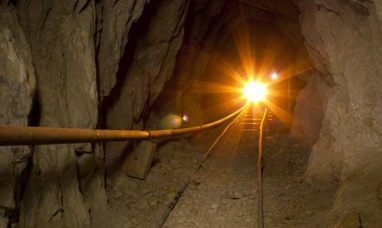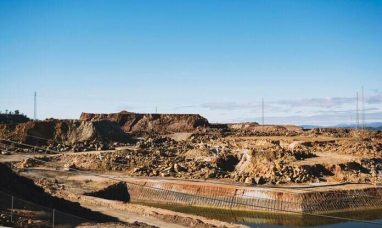Results include 6.90 g/t Au over 15m, 18.49 g/t Au over 5m, 10.87 g/t Au over 6m and 3.32 g/t Au over 18m
TORONTO, Sept. 12, 2022 (GLOBE NEWSWIRE) —
Marathon Gold Corporation (“Marathon” or the “Company”; TSX: MOZ)
is pleased to provide assay results on recent in-fill drilling at the Berry Deposit, part of the Valentine Gold Project located in central Newfoundland (the “Project”).
During 2022, Marathon has been engaged in a program of exploration drilling at the Berry and Victory Deposits, and prospecting for new discovery. These latest drill results represent fire assay data from thirty-six in-fill diamond drill holes at Berry which targeted gaps within the existing Berry drillhole dataset. These gaps are largely assumed to be un-mineralized in the current Berry geological model but are within the conceptual pit shells used in the recent Berry Mineral Resource Estimate. Thirty-two of the thirty-six holes have returned “significant” drill intercepts of greater than 0.7 g/t Au (Table 1) and all returned additional intercepts with gold grades above the 0.3 g/t Au cut-off used in the July 2022 Berry Mineral Resource estimate. Highlights include:
-
VL-22-1199
intersected 18.49 g/t Au over 5 metres including 80.82 g/t Au over 1 metre,
and
3.51 g/t Au over 10 metres including 21.67 g/t Au over 1 metre,
and
4.46 g/t Au over 6 metres including 14.98 g/t Au over 1 metre,
and
4.33 g/t Au over 4 metres including 13.57 g/t Au over 1 metre;
-
VL-22-1232
intersected 6.90 g/t Au over 15 metres including 15.68 g/t Au over 6 metres;
-
VL-22-1211
intersected 10.87 g/t Au over 6 metres including 60.37 g/t Au over 1 metre,
and
0.94 g/t Au over 10 metres; and
-
VL-22-1230
intersected 3.32 g/t Au over 18 metres including 13.23 g/t Au over 3 metres.
-
VL-22-1231
intersected 8.45 g/t Au over 4 metres including 15.13 g/t Au over 2 metres,
and
2.51 g/t Au over 8.15 metres,
and
0.74 g/t Au over 19 metres.
All quoted intersections comprise uncut gold assays in core lengths. All significant assay intervals are reported in Table 1.
Matt Manson, President and CEO, commented: “In July of this year we reported an updated Mineral Resource Estimate for Berry that showed it to be comparable in scale and gold content to the nearby Leprechaun Deposit. Berry now forms an important part of our future mine-planning. The most recent drilling at Berry has been targeting areas previously under-tested and currently assumed to be un-mineralised. Our objective is to add new ounces within the mineral resource pit shell and to tighten our geological controls on existing ounces. Today’s results are an excellent demonstration of both. We are showing new mineralised zones in areas currently characterised as waste, and the extension of previously modeled mineralised domains into waste domains. This is illustrated in the multiple sections of Figure 4. This is a result that reflects the cautious approach to our geological modelling, upon which our current Mineral Resource Estimate is based, and the opportunity to add additional mineral resources within the Project’s known mineral deposits. Berry continues to be an extremely rewarding exploration target for the Valentine Gold Project.”
Gold Mineralization at the Valentine Gold Project
Gold mineralization at the Valentine Gold Project is contained in Quartz-Tourmaline-Pyrite-Gold (“QTP-Au”) veins developed within granitoid rocks of the Valentine Lake Intrusive Suite (“VLIS”) on the hanging wall, or northwest, side of the Valentine Lake Shear Zone (“VLSZ”; Figure 1). Up to four orientations of veins have been measured, with shallowly southwest dipping “Set 1” QTP-Au veins observed to be dominant in both abundance and gold content. At the Leprechaun, Marathon and Berry Deposits, Set 1 QTP-Au veins form densely stacked corridors of mineralization referred to as “Main Zones”. The extent and scale of these mineralised corridors appear related to the size and frequency of sheared mafic dykes which extend northeast-southwest within the granitoid rocks, parallel to the shear zone.
Figure 1
: Location Map, Valentine Gold Project
https://www.globenewswire.com/NewsRoom/AttachmentNg/1ce48bee-91eb-433f-9f0b-5fbef8d7d2fe
Berry Deposit Drill Results
The drill results released today are derived from thirty-six drill holes located between sections 13370E and 14850E. The drill holes were located along the full 1.5 kilometre extent of the Berry Deposit and located in areas of the Berry geological model that had been previously poorly defined with a view to identifying new areas of mineralization or validating areas of mineralization previously modelled with lower confidence. Twenty-four holes were located in the western hanging-wall area of the deposit, five were located in the western footwall area closer to the VLSZ, and seven holes were located in the central or eastern portions of the deposit.
Twenty-nine holes were oriented steeply to the northwest testing for Main Zone-type stacked QTP-Au mineralization in “Set 1” vein orientations. Seven holes were oriented more shallowly towards the SE in order to better define the thickness of any mineralized zones.
Significance of the New Drill Results
In July 2022, Marathon released an updated Mineral Resource Estimate (“MRE”) for the Project. Total Measured and Indicated Mineral Resources now stand at 4.0 Moz Au (64.6 Mt at 1.90 g/t Au). Additional Inferred Mineral Resources comprise 1.1 Moz Au (20.8 Mt at 1.65 g/t). Within this estimate, the Berry Deposit has Measured and Indicated Mineral Resources of 1.1 Moz Au (17.2 Mt at 1.97 g/t Au), and additional Inferred Mineral Resources of 0.25 Moz Au (5.33 Mt at 1.49 g/t Au). Mineral resources which are not mineral reserves do not have demonstrated economic viability.
The MRE was supported by new geological models for each of the Marathon, Leprechaun and Berry Deposits. These models comprised wireframed geological domains for each geological unit, including a domain for QTP-Au veining (the “QTPV” domain), the principal host of mineralization at the Project, and the Mafic Dyke domain, an important control on the distribution of mineralization. The QTPV domains were interpreted based on both the occurrences of logged QTP-Au veins, grade, and structural data indicating their orientation. Within the MRE, 95% of the contained metal classified as Measured and Indicated Mineral Resources was located inside the QTPV domains. Mineral resource blocks located outside the QTPV domains are generally classified as Inferred Mineral Resources. As such, therefore, the QTPV domains serve to restrict the volumes and classification of mineral resources for each deposit compared to previous estimates.
The Berry MRE published in July 2022 was based on 99,845 metres of drilling completed to the end of November 2021. Since that cut-off, Marathon has completed and released an additional 9,809 metres of drilling up to and including today’s report. The purpose of the 2022 drilling is to in-fill areas within the Berry drill dataset and geological models that have been previously under drilled. These under-drilled areas tend to lie outside the modelled QTPV domains, given the restrictive modelling approach described above, and thus generally comprise areas of interpreted waste rock.
Figure 4 indicates four separate sections where the latest drill holes are showing intercepts of resource grade QTP-au veining outside areas of existing QTPV domain but inside the conceptual pit shell used in the July 2022 MRE. Figure 4 also indicates several locations where drill intercepts in the new drill holes are validating previously modelled QTPV domains, and locations where the new drilling is demonstrating the extension of existing QTPV domains into new areas. These results imply the potential to add additional mineral resources at Berry compared to the current estimate.
Table 1:
Significant Assay Intervals from Drill Hole Collars VL-22-1199 to VL-22-1234, Berry Deposit, Valentine Gold Project
|
DDH |
Section |
Az |
Dip |
From |
To |
Core Length (m) |
True Thickness (m) |
Gold g/t |
Gold g/t (cut) |
|
VL-22-1199 |
14795E | 160 | -66 | 83 | 84 | 1 | 0.85 | 0.99 | |
|
93 |
99 |
6 |
5.10 |
4.46 |
|||||
| Including |
94 |
95 |
1 |
0.85 |
14.98 |
||||
|
|
|
|
|
112 |
117 |
5 |
4.25 |
18.49 |
8.33 |
| Including |
113 |
114 |
1 |
0.85 |
80.82 |
30 |
|||
|
|
|
|
|
161 | 163 | 2 | 1.70 | 2.29 | |
|
169 |
173 |
4 |
3.40 |
4.33 |
|||||
| Including |
171 |
172 |
1 |
0.85 |
13.57 |
||||
|
181 |
191 |
10 |
8.50 |
3.51 |
|||||
| Including |
189 |
190 |
1 |
0.85 |
21.67 |
||||
| 253 | 254 | 1 | 0.85 | 1.41 | |||||
|
VL-22-1200 |
13975E | 347 | -83 | 1.78 | 3 | 1.22 | 1.16 | 1.15 | |
|
|
|
|
|
34 | 36 | 2 | 1.90 | 0.95 | |
| 86 | 88 | 2 | 1.90 | 0.99 | |||||
|
VL-22-1201 |
14780E | 163 | -59 | 18 | 19 | 1 | 0.80 | 1.84 | |
| 45 | 46 | 1 | 0.80 | 2.44 | |||||
| 66 | 67 | 1 | 0.80 | 1.23 | |||||
|
VL-22-1202 |
13975E | 343 | -84 | 3 | 4 | 1 | 0.95 | 1.13 | |
|
|
16 | 18 | 2 | 1.90 | 4.83 | ||||
|
|
70 | 71 | 1 | 0.95 | 0.72 | ||||
|
VL-22-1203 |
14670E | 344 | -64 |
11 |
29 |
18 |
15.30 |
1.13 |
|
| 36 | 37 | 1 | 0.85 | 2.48 | |||||
| 41 | 42 | 1 | 0.85 | 0.85 | |||||
| 53 | 60 | 7 | 5.95 | 0.74 | |||||
| 76 | 80 | 4 | 3.40 | 0.94 | |||||
| 90 | 91 | 1 | 0.85 | 1.01 | |||||
|
VL-22-1205 |
13995E | 344 | -81 | 54 | 58 | 4 | 3.60 | 1.72 | |
| 70 | 73 | 3 | 2.70 | 0.86 | |||||
| 77 | 78 | 1 | 0.90 | 0.84 | |||||
|
VL-22-1206 |
14600E | 343 | -79 | 158 | 159 | 1 | 0.90 | 1.30 | |
| 173 | 174 | 1 | 0.90 | 1.46 | |||||
|
VL-22-1207 |
13930E | 344 | -82 | 39 | 48 | 9 | 8.55 | 0.79 | |
| 75 | 81 | 6 | 5.70 | 1.97 | |||||
| 97 | 99 | 2 | 1.90 | 1.05 | |||||
|
VL-22-1208 |
13940E | 340 | -81 | 9 | 10 | 1 | 0.95 | 2.79 | |
| 24 | 25 | 1 | 0.95 | 0.73 | |||||
|
VL-22-1209 |
13900E | 343 | -61 | 4 | 5 | 1 | 0.85 | 9.64 | |
| 30 | 32 | 2 | 1.70 | 2.47 | |||||
| 55 | 56 | 1 | 0.85 | 1.81 | |||||
| 76 | 78 | 2 | 1.70 | 1.23 | |||||
|
VL-22-1210 |
14605E | 345 | -75 | 9 | 11 | 2 | 1.80 | 0.82 | |
| 21 | 23 | 2 | 1.80 | 0.74 | |||||
| 32 | 34 | 2 | 1.80 | 2.57 | |||||
| 89 | 90 | 1 | 0.90 | 2.27 | |||||
| 94 | 98 | 4 | 3.60 | 0.96 | |||||
| 164 | 165 | 1 | 0.90 | 3.02 | |||||
|
VL-22-1211 |
13880E | 339 | -79 | 11 | 18 | 7 | 6.30 | 1.57 | |
| 49 | 50 | 1 | 0.90 | 4.74 | |||||
|
|
58 |
64 |
6 |
5.40 |
10.87 |
5.81 |
|||
| Including |
60 |
61 |
1 |
0.90 |
60.37 |
30 |
|||
| 72 | 73 | 1 | 0.90 | 0.80 | |||||
|
85 |
95 |
10 |
9.00 |
0.94 |
|
||||
| 108 | 109 | 1 | 0.90 | 2.07 | |||||
|
VL-22-1212 |
13850E | 342 | -73 | 17 | 18 | 1 | 0.90 | 4.22 | |
| 79 | 82 | 3 | 2.70 | 1.07 | |||||
| 127 | 130 | 3 | 2.70 | 2.51 | |||||
| 173 | 175 | 2 | 1.80 | 1.17 | |||||
| 181 | 182 | 1 | 0.90 | 0.74 | |||||
|
VL-22-1213 |
14850E | 344 | -83 | 13 | 14 | 1 | 0.95 | 0.83 | |
|
87 |
88 |
1 |
0.95 |
28.57 |
|
||||
|
|
112 | 113 | 1 | 0.95 | 1.94 | ||||
| 130 | 131 | 1 | 0.95 | 5.37 | |||||
|
141 |
148 |
7 |
6.65 |
2.48 |
|
||||
| 238 | 239 | 1 | 0.95 | 7.21 | |||||
|
258 |
259 |
1 |
0.95 |
11.80 |
|
||||
|
VL-22-1215 |
13830E | 342 | -78 | 83 | 87 | 4 | 3.60 | 0.89 | |
| 112 | 113 | 1 | 0.90 | 1.14 | |||||
| 135 | 136 | 1 | 0.90 | 0.78 | |||||
|
VL-22-1216 |
14370E | 163 | -81 | 16 | 17 | 1 | 0.95 | 2.31 | |
| 87 | 88 | 1 | 0.95 | 0.82 | |||||
|
|
95 | 98 | 3 | 2.85 | 1.28 | ||||
| 102 | 103 | 1 | 0.95 | 0.76 | |||||
| 141 | 142 | 1 | 0.95 | 0.72 | |||||
| 166 | 167 | 1 | 0.95 | 1.82 | |||||
|
VL-22-1217 |
13830E | 343 | -76 | 63 | 64 | 1 | 0.90 | 7.18 | |
| 70 | 75 | 5 | 4.50 | 1.35 | |||||
|
VL-22-1219 |
13800E | 342 | -82 | 80 | 81 | 1 | 0.95 | 6.94 | |
|
|
91 |
92 |
1 |
0.95 |
22.98 |
|
|||
| 94 | 95 | 1 | 0.95 | 1.04 | |||||
| 99 | 100 | 1 | 0.95 | 1.12 | |||||
| 104 | 108 | 4 | 3.80 | 0.79 | |||||
| 127 | 131 | 4 | 3.80 | 1.99 | |||||
| 137 | 138 | 1 | 0.95 | 1.76 | |||||
| 212 | 214 | 2 | 1.90 | 1.70 | |||||
| 220 | 221 | 1 | 0.95 | 1.08 | |||||
|
|
223 | 226 | 3 | 2.85 | 0.76 | ||||
|
VL-22-1220 |
13400E | 338 | -83 | 31 | 33 | 2 | 1.90 | 1.84 | |
| 58 | 60 | 2 | 1.90 | 1.16 | |||||
|
VL-22-1221 |
13380E | 340 | -85 | 29 | 31 | 2 | 1.90 | 2.35 | |
| 38 | 39 | 1 | 0.95 | 1.53 | |||||
|
VL-22-1222 |
13820E | 342 | -82 | 71 | 72 | 1 | 0.95 | 3.27 | |
| 81 | 82 | 1 | 0.95 | 0.78 | |||||
| 101 | 102 | 1 | 0.95 | 1.01 | |||||
|
VL-22-1223 |
13480E | 344 | -70 | 11 | 12 | 1 | 0.85 | 2.37 | |
|
27 |
40 |
13 |
11.05 |
0.81 |
|
||||
| 62 | 64 | 2 | 1.70 | 0.89 | |||||
| 103 | 105 | 2 | 1.70 | 3.45 | |||||
|
VL-22-1224 |
13500E | 345 | -75 | 22 | 23 | 1 | 0.90 | 1.22 | |
| 30 | 31 | 1 | 0.90 | 0.85 | |||||
| 38 | 39 | 1 | 0.90 | 3.04 | |||||
|
|
42 | 43 | 1 | 0.90 | 5.15 | ||||
| 63 | 65 | 2 | 1.80 | 1.25 | |||||
| 87 | 88 | 1 | 0.90 | 0.74 | |||||
| 95 | 96 | 1 | 0.90 | 3.64 | |||||
| 106 | 107 | 1 | 0.90 | 3.91 | |||||
| 110 | 111 | 1 | 0.90 | 0.80 | |||||
|
VL-22-1225 |
13850E | 345 | -75 |
7 |
14 |
7 |
6.30 |
1.67 |
|
| 23 | 24 | 1 | 0.90 | 1.24 | |||||
| 95 | 97 | 2 | 1.80 | 3.22 | |||||
| 134 | 135 | 1 | 0.90 | 0.74 | |||||
| 154 | 158 | 4 | 3.60 | 1.10 | |||||
| 199 | 201 | 2 | 1.80 | 0.72 | |||||
|
VL-22-1226 |
13520E | 344 | -80 | 68 | 69 | 1 | 0.90 | 0.90 | |
| 101 | 103 | 2 | 1.80 | 3.55 | |||||
| 117 | 118 | 1 | 0.90 | 1.02 | |||||
| 119 | 120 | 1 | 0.90 | 0.73 | |||||
| 132 | 133 | 1 | 0.90 | 0.74 | |||||
| 140 | 141 | 1 | 0.90 | 0.87 | |||||
|
VL-22-1227 |
13520E | 343 | -80 |
48 |
61 |
13 |
11.70 |
1.45 |
|
| 110 | 113 | 3 | 2.70 | 1.09 | |||||
|
VL-22-1228 |
13720E | 341 | -65 | 62 | 63 | 1 | 0.85 | 0.77 | |
| 75 | 76 | 1 | 0.85 | 0.79 | |||||
| 108 | 109 | 1 | 0.85 | 5.21 | |||||
|
|
118 | 120 | 2 | 1.70 | 0.90 | ||||
| 129 | 130 | 1 | 0.85 | 1.49 | |||||
| 144 | 145 | 1 | 0.85 | 4.41 | |||||
| 162 | 163 | 1 | 0.85 | 1.04 | |||||
| 190 | 191 | 1 | 0.85 | 0.83 | |||||
|
217 |
230 |
13 |
11.05 |
1.23 |
|
||||
| 253 | 254 | 1 | 0.85 | 0.72 | |||||
| 258 | 259 | 1 | 0.85 | 1.46 | |||||
| 265 | 266 | 1 | 0.85 | 0.82 | |||||
| 275 | 277 | 2 | 1.70 | 0.90 | |||||
|
VL-22-1229 |
13500E | 342 | -75 | 15 | 21 | 6 | 5.40 | 0.85 | |
|
|
42 | 43 | 1 | 0.90 | 0.86 | ||||
| 44 | 45 | 1 | 0.90 | 0.81 | |||||
| 51 | 53 | 2 | 1.80 | 1.10 | |||||
|
60 |
69 |
9 |
8.10 |
3.34 |
|
||||
| Including |
61 |
62 |
1 |
0.90 |
18.06 |
|
|||
| 121 | 122 | 1 | 0.90 | 1.19 | |||||
|
VL-22-1230 |
13560E | 163 | -72 | 39 | 41 | 2 | 1.80 | 1.53 | |
| 53 | 56 | 3 | 2.70 | 1.65 | |||||
|
94 |
112 |
18 |
16.20 |
3.32 |
|
||||
| Including |
108 |
111 |
3 |
2.70 |
13.23 |
|
|||
| 119 | 120 | 1 | 0.90 | 1.31 | |||||
| 129 | 130 | 1 | 0.90 | 1.20 | |||||
| 135 | 137 | 2 | 1.80 | 0.89 | |||||
| 166 | 167 | 1 | 0.90 | 0.71 | |||||
| 168 | 169 | 1 | 0.90 | 0.80 | |||||
| 171 | 172 | 1 | 0.90 | 0.77 | |||||
| 179 | 180 | 1 | 0.90 | 0.97 | |||||
| 182 | 183 | 1 | 0.90 | 0.91 | |||||
| 186 | 187 | 1 | 0.90 | 0.81 | |||||
| 224 | 225 | 1 | 0.90 | 0.91 | |||||
| 230 | 231 | 1 | 0.90 | 1.13 | |||||
| 262 | 263 | 1 | 0.90 | 0.78 | |||||
|
VL-22-1231 |
13580E | 163 | -59 |
6.85 |
15 |
8.15 |
6.52 |
2.51 |
|
|
73 |
92 |
19 |
15.20 |
0.74 |
|
||||
|
113 |
117 |
4 |
3.20 |
8.45 |
|
||||
| Including |
115 |
117 |
2 |
1.60 |
15.13 |
|
|||
| 145 | 146 | 1 | 0.80 | 0.86 | |||||
|
VL-22-1232 |
13730E | 162 | -54 |
34 |
49 |
15 |
12.00 |
6.90 |
6.85 |
| Including |
34 |
40 |
6 |
4.80 |
15.68 |
15.54 |
|||
|
VL-22-1234 |
13480E | 343 | -74 | 11 | 12 | 1 | 0.90 | 0.87 | |
| 19 | 20 | 1 | 0.90 | 0.79 | |||||
| 77 | 78 | 1 | 0.90 | 2.19 |
Notes on the Calculation of Assay Intervals
-
“Significant” assay intervals are defined as 1m core length or more of mineralization with an average fire assay result of greater than 0.7 g/t Au, representing the bottom cut-off for high-grade mill feed in the Marathon April 2021 Feasibility Study mine plan. Assay intervals with an average fire assay result of between 0.3 g/t Au and 0.7 g/t Au are above the cut-off used in the July 2022 Mineral Resource estimate for the Berry Deposit but are not considered “significant” for the purposes of this news release.
-
Cut gold grades are calculated at 30 g/t Au.
-
No significant results in drill holes VL-22-1204, 1214, 1218 and 1233.
Figure 2:
Location of Berry Deposit Exploration Drill Hole Collars VL-22-1199 to VL-22-1234
https://www.globenewswire.com/NewsRoom/AttachmentNg/b9387243-a94a-4298-83f4-5c6b50bc4b95
Figure 3:
Long Section of the Berry Deposit (View NW) incorporating all drilling up to and including VL-22-1234, Representing 109,795 metres, and Assays Above 0.3 g/t Au. New drill holes reported today are illustrated in blue.
https://www.globenewswire.com/NewsRoom/AttachmentNg/f64501f9-aab0-4411-b80c-b3a8643627a5
Figure 4:
Cross-sections of the Berry Geological Model and new drillholes. Disks represent fire assay data on 1 metre samples above the 0.3 g/t Au cut-off used in the July 2022 Mineral Resource Estimate. QTPV domains are illustrated in yellow. Mafic Dyke domains in Green. Sections are 20 metres thick. Arrows indicate areas of new mineralization outside modelled QTPV domains, with implied SW dipping “Set 1” vein orientations
https://www.globenewswire.com/NewsRoom/AttachmentNg/6d7706d3-7ca0-40ba-bb6b-a25ce332a002
Qualified Persons
Disclosure of a scientific or technical nature in this news release was prepared under the supervision of Mr. David Ross, P.Geo. (Ont), Vice President of Geology and Exploration for Marathon Gold Corporation and Mr. Nicholas Capps, P.Geo. (NL), Manager of Exploration for Marathon Gold Corporation. Exploration data quality assurance and control for Marathon is under the supervision of Jessica Borysenko, P.Geo (NL), GIS Manager for Marathon Gold Corporation. Mr. Ross, Mr. Capps and Ms. Borysenko are qualified persons under National Instrument (“NI”) 43-101. Mr. Roy Eccles, P.Geo. (NL), of APEX Geoscience Ltd. is a Qualified Person for purposes of NI 43-101, is independent of Marathon and the Valentine Gold Project, and has reviewed and takes responsibility for the updated July 2022 MRE prepared by John T. Boyd Company.
Quality Assurance-Quality Control (“QA/QC”)
QA/QC protocols followed at the Valentine Gold Project include the insertion of blanks and standards at regular intervals in each sample batch. Drill core is cut in half with one half retained at site, the other half tagged and sent to Eastern Analytical Limited in Springdale, NL. All reported core samples are analyzed for Au by fire assay (30g) with AA finish. All samples above 0.30 g/t Au in economically interesting intervals are further assayed using metallic screen to mitigate the presence of coarse gold. Significant mineralized intervals are reported in Table 1 as core lengths and estimated true thickness (70 – 95% of core length) and reported with and without a top-cut of 30 g/t Au applied.
About Marathon
Marathon (TSX: MOZ) is a Toronto based gold company advancing its 100%-owned Valentine Gold Project located in the central region of Newfoundland and Labrador, one of the top mining jurisdictions in the world. The Project comprises a series of five mineralized deposits along a 20-kilometre system. An April 2021 Feasibility Study outlined an open-pit mining and conventional milling operation over a thirteen-year mine life with a 31.5% after-tax rate of return. The Project has estimated Proven Mineral Reserves of 1.40 Moz (29.68 Mt at 1.46 g/t) and Probable Mineral Reserves of 0.65 Moz (17.38 Mt at 1.17 g/t). Please see Marathon’s Annual Information Form for the year ended December 31, 2021, and other filings made with Canadian securities regulatory authorities and available at
www.sedar.com
for further details and assumptions relating to the Valentine Gold Project.
For more information, please contact:
|
Amanda Mallough Senior Associate, Investor Relations Tel: 416 855-8202 [email protected] |
Matt Manson President & CEO [email protected] |
Julie Robertson CFO [email protected] |
To find out more information on Marathon Gold Corporation and the Valentine Gold Project, please visit
www.marathon-gold.com
.
Cautionary Statement Regarding Forward-Looking Information
Certain information contained in this news release, constitutes forward-looking information within the meaning of Canadian securities laws (“forward-looking statements”). All statements in this news release, other than statements of historical fact, which address events, results, outcomes or developments that Marathon expects to occur are forward-looking statements. Forward-looking statements include statements that are predictive in nature, depend upon or refer to future events or conditions, or include words such as “expects”, “anticipates”, “plans”, “believes”, “estimates”, “considers”, “intends”, “targets”, or negative versions thereof and other similar expressions, or future or conditional verbs such as “may”, “will”, “should”, “would” and “could”. We provide forward-looking statements for the purpose of conveying information about our current expectations and plans relating to the future, and readers are cautioned that such statements may not be appropriate for other purposes. More particularly and without restriction, this news release contains forward-looking statements and information about the FS and the results therefrom (including IRR, NPV
5%
, Capex, FCF, AISC and other financial metrics), the realization of mineral reserve and mineral resource estimates, the future financial or operating performance of the Company and the Project, capital and operating costs, the ability of the Company to obtain all government approvals, permits and third-party consents in connection with the Company’s exploration, development and operating activities, the potential impact of COVID-19 on the Company, the Company’s ability to successfully advance the Project and anticipated benefits thereof, economic analyses for the Valentine Gold Project, processing and recovery estimates and strategies, future exploration and mine plans, objectives and expectations and corporate planning of Marathon, future environmental impact statements and the timetable for completion and content thereof and statements as to management’s expectations with respect to, among other things, the matters and activities contemplated in this news release.
Forward-looking statements involve known and unknown risks, uncertainties and assumptions and accordingly, actual results and future events could differ materially from those expressed or implied in such statements. You are hence cautioned not to place undue reliance on forward-looking statements. In respect of the forward-looking statements concerning the interpretation of exploration results and the impact on the Project’s mineral resource estimate, the Company has provided such statements in reliance on certain assumptions it believes are reasonable at this time, including assumptions as to the continuity of mineralization between drill holes. A mineral resource that is classified as “inferred” or “indicated” has a great amount of uncertainty as to its existence and economic and legal feasibility. It cannot be assumed that any or part of an “indicated mineral resource” or “inferred mineral resource” will ever be upgraded to a higher category of mineral resource. Investors are cautioned not to assume that all or any part of mineral deposits in these categories will ever be converted into proven and probable mineral reserves.
By its nature, this information is subject to inherent risks and uncertainties that may be general or specific and which give rise to the possibility that expectations, forecasts, predictions, projections or conclusions will not prove to be accurate, that assumptions may not be correct, and that objectives, strategic goals and priorities will not be achieved. Factors that could cause future results or events to differ materially from current expectations expressed or implied by the forward-looking statements include risks and uncertainties relating to the interpretation of drill results, the geology, grade and continuity of mineral deposits and conclusions of economic evaluations; uncertainty as to estimation of mineral resources; inaccurate geological and metallurgical assumptions (including with respect to the size, grade and recoverability of mineral resources); the potential for delays or changes in plans in exploration or development projects or capital expenditures, or the completion of feasibility studies due to changes in logistical, technical or other factors; the possibility that future exploration, development, construction or mining results will not be consistent with the Company’s expectations; risks related to the ability of the current exploration program to identify and expand mineral resources; risks relating to possible variations in grade, planned mining dilution and ore loss, or recovery rates and changes in project parameters as plans continue to be refined; operational mining and development risks, including risks related to accidents, equipment breakdowns, labour disputes (including work stoppages and strikes) or other unanticipated difficulties with or interruptions in exploration and development; risks related to the inherent uncertainty of production and cost estimates and the potential for unexpected costs and expenses; risks related to commodity and power prices, foreign exchange rate fluctuations and changes in interest rates; the uncertainty of profitability based upon the cyclical nature of the mining industry; risks related to failure to obtain adequate financing on a timely basis and on acceptable terms or delays in obtaining governmental or other stakeholder approvals or in the completion of development or construction activities; risks related to environmental regulation and liability, government regulation and permitting; risks relating to the Company’s ability to attract and retain skilled staff; risks relating to the timing of the receipt of regulatory and governmental approvals for continued operations and future development projects; political and regulatory risks associated with mining and exploration; risks relating to the potential impacts of the COVID-19 pandemic on the Company and the mining industry; changes in general economic conditions or conditions in the financial markets; and other risks described in Marathon’s documents filed with Canadian securities regulatory authorities, including the Annual Information Form for the year ended December 31, 2021.
You can find further information with respect to these and other risks in Marathon’s Annual Information Form for the year ended December 31, 2021, and other filings made with Canadian securities regulatory authorities available at
www.sedar.com
. Other than as specifically required by law, Marathon undertakes no obligation to update any forward-looking statement to reflect events or circumstances after the date on which such statement is made, or to reflect the occurrence of unanticipated events, whether as a result of new information, future events or results otherwise.
Featured image: Megapixl © Kadmy










